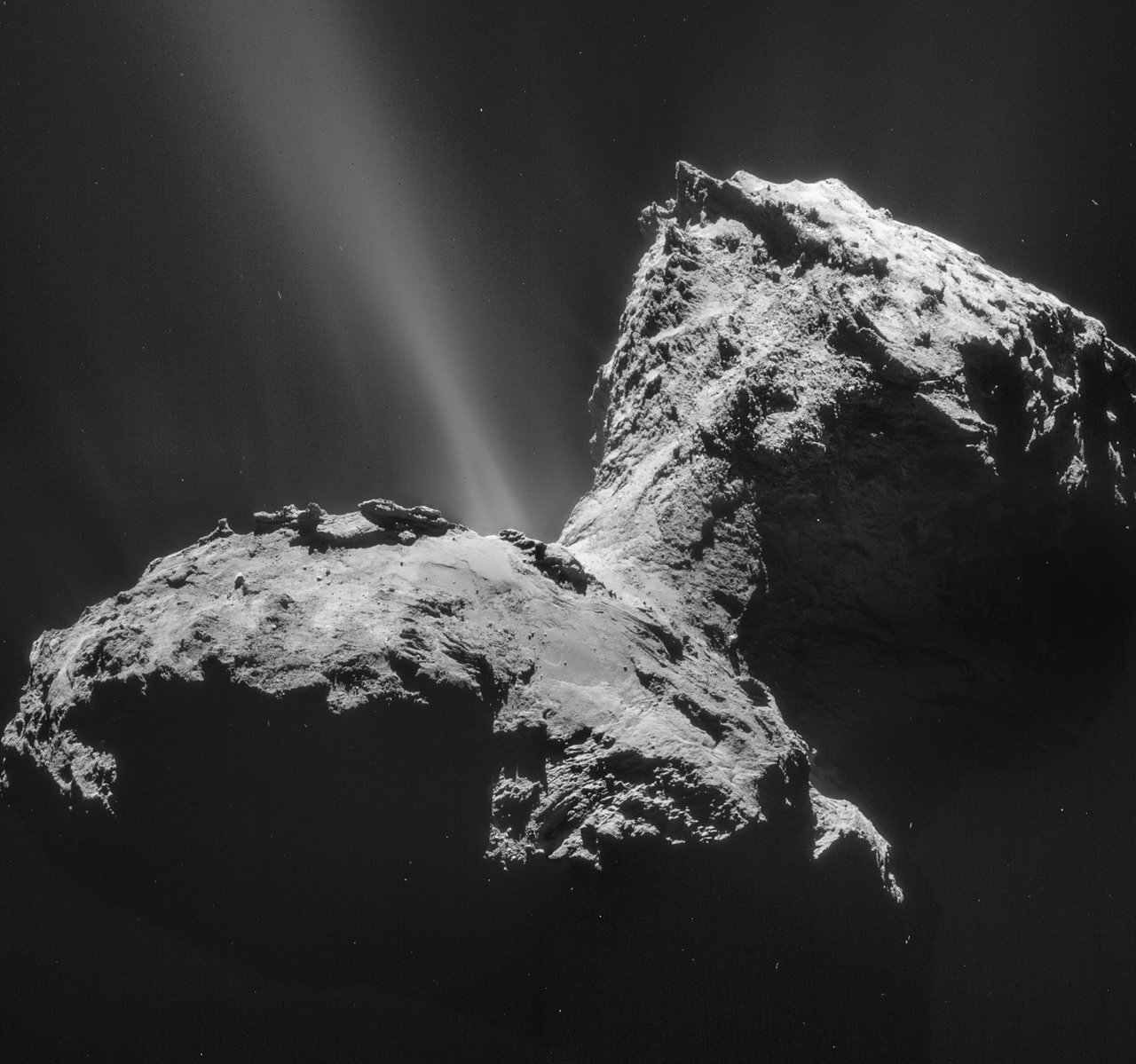The Rosetta orbiter spectrometer for ion and neutral analysis (ROSINA) instrument orbited comet 67P to revolutionize our understanding of cometary material composition. A key finding of the satellite was to explore the composition of comet 67P/Churyumov-Gerasimenko. In a new report published in Science Advances, Ahmed Mahjoub and a team of planetary scientists in the Jet Propulsion Lab at CalTech, the Space Science Institute Colorado, and the University of Bern in Switzerland, used the ROSINA data to study dust particles volatilized during a dust event in September 2016.
The scientists reported the detection of large organosulfur species, on the comet’s surface. They then conducted laboratory simulations to indicate the formation of this material from chemical reactions initiated by irradiating mixed ices containing hydrogen sulfide. The results highlighted the significance of cometary sulfur chemistry and its presence in precometary materials to facilitate the detection of organosulfur materials in other comets and icy small bodies by using the James Webb Space Telescope.
When the Rosetta mission visited comet 67P, the satellite revealed remarkable insights to the diverse molecules on the comet. The researchers detected organics by using a remote sensing instrument, visible and infrared thermal imaging spectrometry, and a series of instruments including ROSINA, Ptolemy and the cometary sampling and composition experiment. The measurements made using ROSINA provided substantial information of the complex organic chemistry in cometary materials, alongside further insights to the composition of the semi-volatile phases of comet 67P.
Rosetta: The comet-chasing European Space Agency (ESA) probe that deployed (and accidentally bounced) its lander Philae on the surface of Comet 67P. This GIF is made up of images Rosetta beamed back to Earth. Image credit: ESA/landru79
The measurements further revealed the detection of ammonium salts. In this work, Mahjoub and colleagues discussed the data gathered from the Rosetta probe and ROSINA during an event of enhanced dust impact on the instrument. They interpreted the data to reveal the presence of large organosulfur molecules with low volatility embedded in the dust grains of comet 67P. The team completed in-lab simulations of the organic chemistry that began on the comet due to irradiation of simple ice mixtures in the presence or absence of hydrogen sulfide. The outcomes indicated the dominance of sulfur in the environment, and a possible ice-chemistry origin to the sulfur-bearing species on the cometary material.
Prior to landing on the comet, Rosetta flew elliptical orbits during the last few weeks of its mission with the pericenter altitude gradually lowered. On September 2016, the spacecraft reached its closest distance from the comet. It is assumed that the space probe was hit by a chunk of ice or dust prior to that, which led to the observation of high-density gas plumes for about 3 hours in the vicinity of the instrument.
2023-07-02 09:44:13
Article from phys.org rnrn
